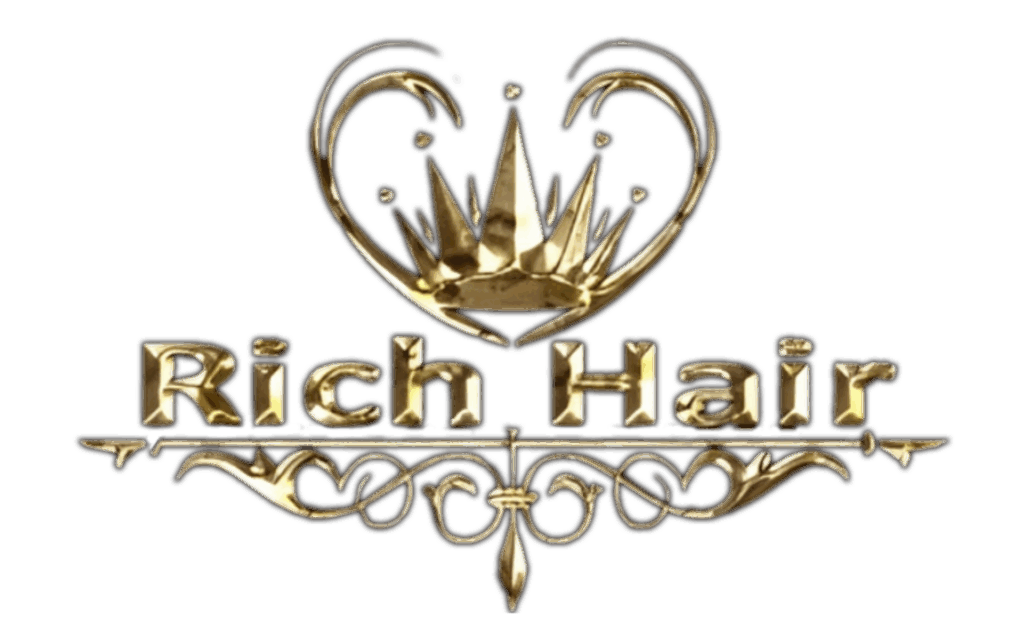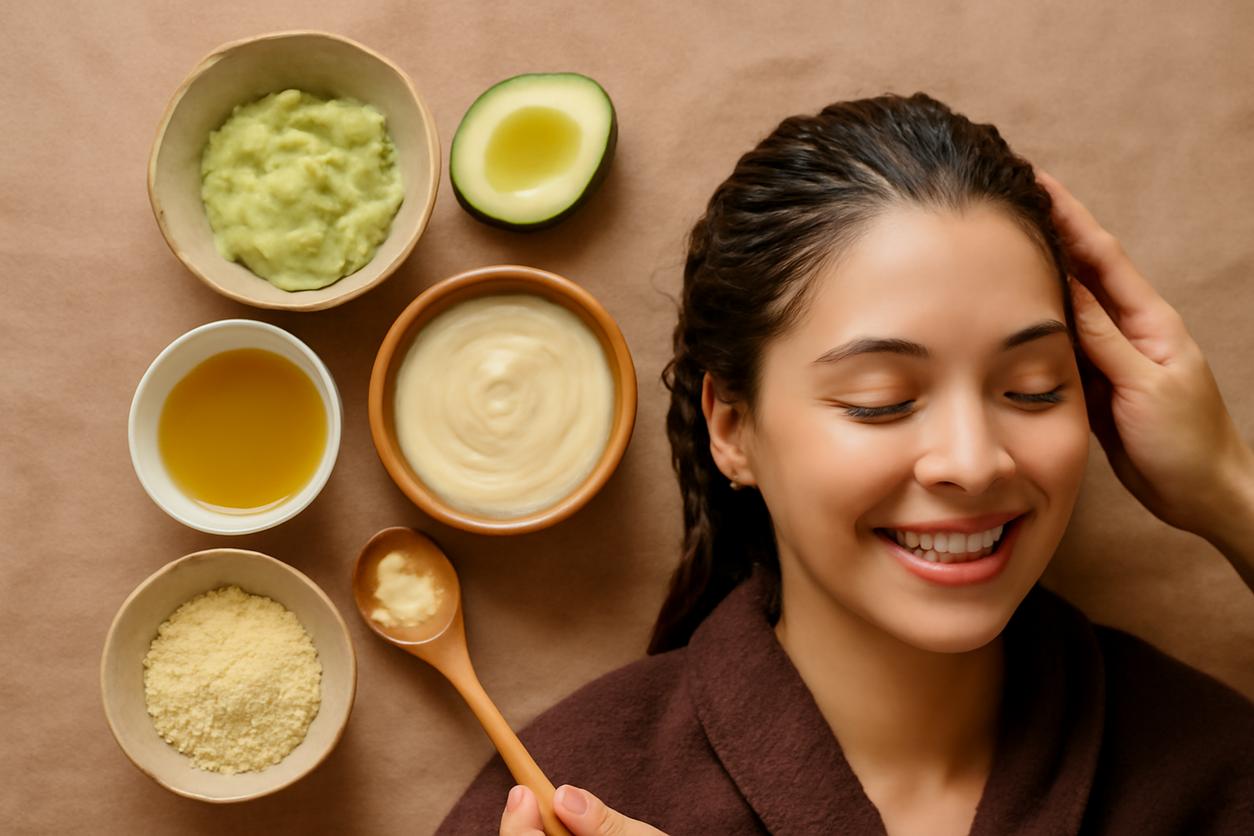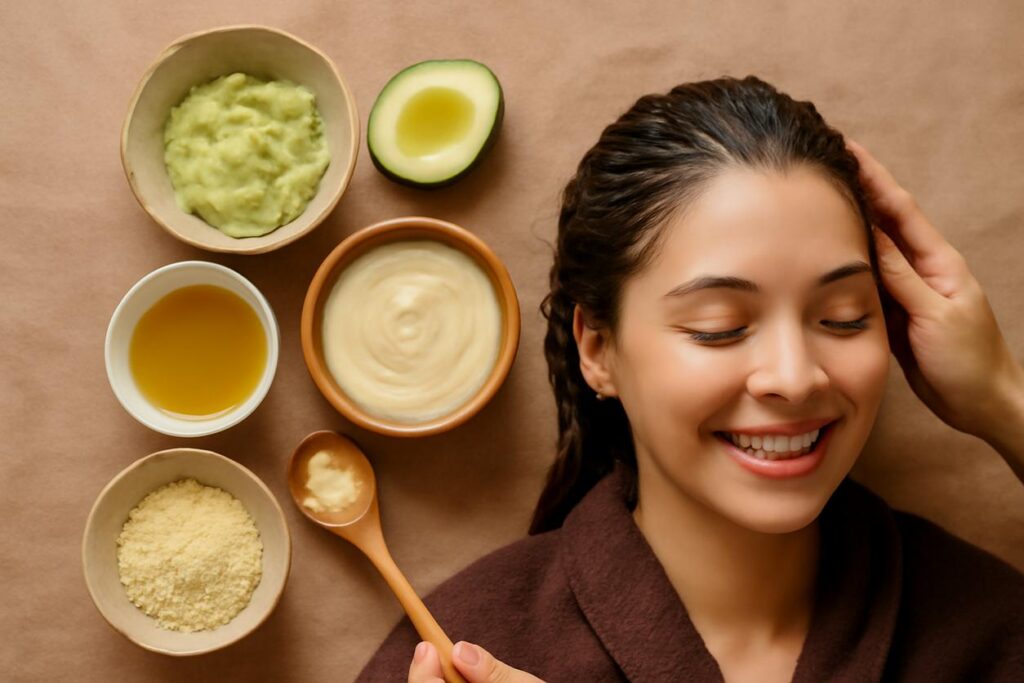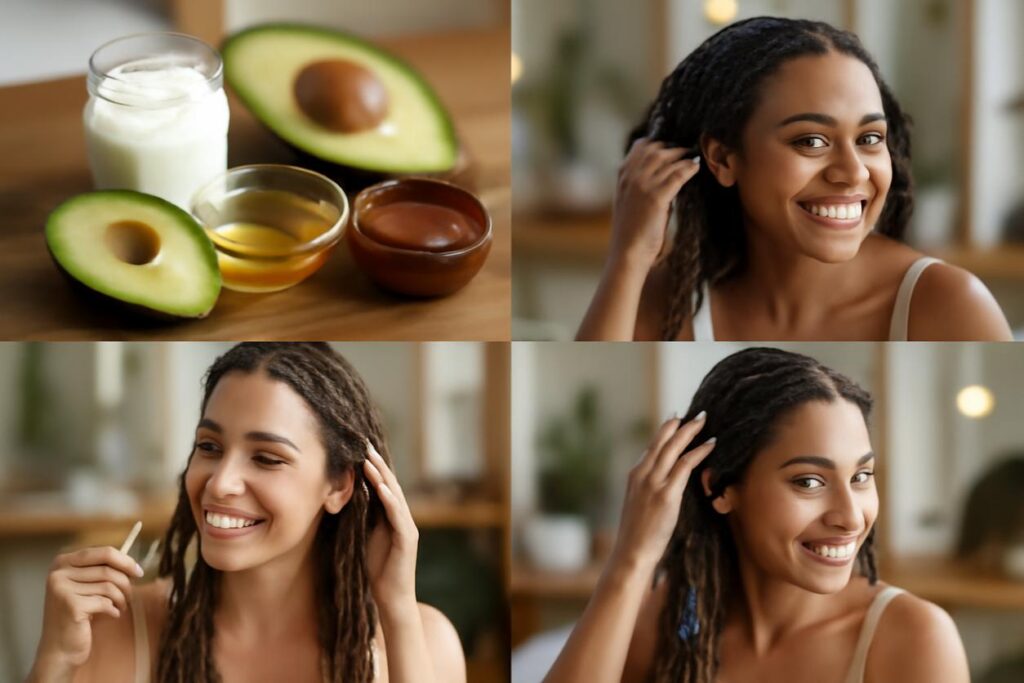Introduction — Why eating for curls matters
You meticulously select sulfate-free shampoos, perfect your plopping technique, and invest in silk pillowcases. But what if the secret to your most vibrant, defined, and resilient curls starts not in your bathroom, but in your kitchen? The world of curly hair nutrition is a foundational, yet often overlooked, aspect of hair care. It’s the internal framework that supports everything you do externally. Just as a plant needs the right soil and nutrients to flourish, your hair follicles require a specific blend of vitamins, minerals, and macronutrients to build strong, healthy, and beautiful curls.
This guide delves into the science behind eating for your curls. We will explore how your unique hair structure influences its nutritional demands and provide actionable, practical advice to nourish your hair from the inside out. Forget generic “healthy hair” tips; this is about targeted curly hair nutrition designed for your waves, coils, and kinks.
How curl structure changes nutritional needs
Unlike straight hair, curly hair has a unique elliptical follicle shape that causes the hair shaft to grow at an angle, creating its characteristic bends and twists. This structure, while beautiful, also presents inherent vulnerabilities. Each bend in a curl is a potential point of weakness where the cuticle (the outer protective layer of the hair shaft) can lift, leading to moisture loss, frizz, and breakage.
Furthermore, the scalp’s natural oils, or sebum, have a harder time traveling down the coiled hair shaft. This often results in an oily scalp but dry, thirsty ends. These structural characteristics mean that curly hair has a greater need for specific nutrients that bolster its internal structure, promote moisture retention, and ensure the scalp’s health is in optimal condition to produce strong hair.
Curl patterns and porosity explained
Understanding your hair’s properties is key to tailoring your nutrition. Two primary factors come into play:
- Curl Pattern: This refers to the shape and size of your curls, typically classified on a scale from Type 2 (wavy) to Type 4 (coily/kinky). Tighter curl patterns have more bends, increasing the potential for dryness and breakage.
- Porosity: This is your hair’s ability to absorb and retain moisture. Low porosity hair has a tightly bound cuticle layer, making it difficult for moisture to get in. High porosity hair has gaps and holes in the cuticle, so it absorbs moisture easily but also loses it just as quickly. A well-formulated curly hair nutrition plan can help manage the challenges associated with your specific porosity level.
Core nutrients that support curl strength and shine
Your hair is primarily made of a protein called keratin. The production of keratin and the health of the follicle depend on a steady supply of specific nutrients. Think of these as the essential building materials for your curls.
Protein: building blocks for strong strands
Since hair is made of protein, consuming adequate amounts is non-negotiable. Amino acids, the building blocks of protein, are essential for creating strong keratin. A deficiency can lead to brittle, weak hair that is more prone to snapping at its curves.
- Key Sources: Lean meats (chicken, turkey), fish, eggs, dairy products (Greek yogurt, cottage cheese), legumes (lentils, chickpeas), tofu, and quinoa.
- For Your Curls: Protein provides the structural integrity to prevent breakage along the curl shaft.
Essential fatty acids for moisture and elasticity
Omega-3 and Omega-6 fatty acids are crucial for hair health. They are vital components of the cell membranes in your scalp and help produce the natural oils that keep your scalp and hair moisturized. For curls prone to dryness, these are especially important.
- Key Sources: Fatty fish (salmon, mackerel, sardines), flaxseeds, chia seeds, walnuts, and avocados.
- For Your Curls: EFAs help combat dryness from the inside, improving elasticity and adding shine. This internal lubrication supports the sebum that struggles to travel down the hair shaft.
Iron, zinc and the mineral balance
Minerals play a critical role in the hair growth cycle. Iron deficiency (anemia) is a major cause of hair loss, as it disrupts the nutrient supply to the follicle. Zinc is essential for hair tissue growth and repair, and it helps keep the oil glands around the follicles working properly.
- Iron Sources: Red meat, spinach, lentils, fortified cereals, and oysters. Pair with Vitamin C for better absorption.
- Zinc Sources: Oysters, beef, pumpkin seeds, lentils, and spinach.
- For Your Curls: Proper mineral balance ensures your follicles are functioning at their peak, producing the strongest possible hair strands to withstand styling and manipulation.
Vitamins that aid scalp and hair health (A, C, D, B complex)
A cocktail of vitamins is essential for a holistic approach to curly hair nutrition.
- Vitamin A: Helps skin glands make sebum, which moisturizes the scalp and helps keep hair healthy. Find it in sweet potatoes, carrots, and spinach.
- Vitamin C: A powerful antioxidant that helps protect against free radical damage. It’s also needed to create collagen and helps your body absorb iron. Excellent sources include citrus fruits, bell peppers, and strawberries.
- Vitamin D: Low levels of Vitamin D have been linked to hair loss. It helps create new follicles. Your body produces it from sun exposure, but it’s also in fatty fish and fortified foods.
- B Complex Vitamins: Biotin (B7) is the most well-known for hair health, but all B vitamins are important. They help create red blood cells, which carry oxygen and nutrients to the scalp and hair follicles. Whole grains, almonds, meat, and dark, leafy greens are rich sources.
Gut health, digestion and hair outcomes
The saying “you are what you eat” is only half the story; you are what you absorb. A healthy gut microbiome is essential for breaking down food and absorbing the nutrients your hair follicles need. An imbalance in gut bacteria, often caused by stress or a poor diet, can lead to inflammation and poor nutrient absorption, which can manifest as dull, lifeless hair. Incorporating probiotic-rich foods like yogurt, kefir, and kimchi, along with prebiotic fibers from foods like garlic, onions, and bananas, can support a healthy gut and, consequently, healthier curls.
Whole foods to prioritize for curl resilience
To simplify your curly hair nutrition journey, focus on incorporating a variety of these nutrient-dense whole foods into your diet:
- Salmon: Packed with Omega-3s, protein, and Vitamin D.
- Eggs: A fantastic source of protein and biotin.
- Spinach: Loaded with iron, Vitamin A, and Vitamin C.
- Sweet Potatoes: A great source of beta-carotene, which the body converts to Vitamin A.
- Avocados: Rich in healthy fats, Vitamin E, and Vitamin C.
- Nuts and Seeds: Walnuts, almonds, flaxseeds, and chia seeds provide Omega-3s, zinc, and Vitamin E.
- Berries: High in antioxidants and Vitamin C.
- Lentils and Beans: Excellent plant-based sources of protein, iron, and zinc.
One-week sample meal plan for curl nourishment
This sample plan is a template to show how you can easily incorporate curl-friendly nutrients throughout your day. Adjust portions based on your individual needs.
Breakfasts and smoothies
Option 1: Greek yogurt bowl with mixed berries, a tablespoon of chia seeds, and a sprinkle of walnuts.
Option 2: Curl-Power Smoothie: 1 cup spinach, 1/2 avocado, 1/2 cup frozen mango, 1 scoop protein powder, and almond milk.
Option 3: Two scrambled eggs with a side of whole-wheat toast and sliced avocado.
Lunches and dinners
Lunch: Large mixed greens salad with grilled chicken or chickpeas, bell peppers, cucumber, and a lemon-tahini dressing.
Dinner: Baked salmon with a side of roasted sweet potatoes and steamed broccoli.
Here is a sample table for a full week:
| Day | Breakfast | Lunch | Dinner |
|---|---|---|---|
| Monday | Greek Yogurt Bowl | Quinoa Salad with Black Beans | Baked Salmon with Asparagus |
| Tuesday | Curl-Power Smoothie | Leftover Salmon Salad | Chicken and Vegetable Stir-fry |
| Wednesday | Oatmeal with Flaxseed and Berries | Lentil Soup | Turkey Meatballs with Zucchini Noodles |
| Thursday | Scrambled Eggs with Spinach | Leftover Turkey Meatballs | Shrimp and Broccoli with Brown Rice |
| Friday | Greek Yogurt Bowl | Tuna Salad Sandwich on Whole Wheat | Homemade Veggie Pizza |
| Saturday | Curl-Power Smoothie | Large Chicken Caesar Salad | Steak with Sweet Potato Fries |
| Sunday | Pancakes with Berries | Leftover Steak Salad | Roast Chicken with Root Vegetables |
Snacks and quick bites
A handful of almonds or walnuts, an apple with peanut butter, a hard-boiled egg, or cottage cheese with fruit.
Supplements — when they help and what the evidence shows
A food-first approach to curly hair nutrition is always best. However, supplements can be useful for filling specific nutritional gaps, especially after a blood test confirms a deficiency. Biotin is a popular hair supplement, but it’s most effective in those who are truly deficient. Iron, Vitamin D, and Zinc supplements may also be recommended by a healthcare provider. Always consult with a doctor before starting any new supplement regimen, as excessive intake of certain nutrients can be harmful. For more information on micronutrients, you can consult Micronutrient facts and research.
Hydration, internal oils and lifestyle tips
Proper hydration is the cornerstone of moisture for your entire body, including your hair. Drinking plenty of water throughout the day helps your body transport nutrients to your follicles. For internal oiling, focus on consuming healthy fats from sources like avocados and nuts. Beyond diet, managing stress is crucial. High cortisol levels (the stress hormone) can disrupt the hair growth cycle. Practices like meditation, regular exercise, and adequate sleep are powerful tools in your hair health arsenal.
Adapting eating plans by curl type and porosity
Your specific curl type can guide your nutritional focus. Effective curly hair nutrition strategies for 2025 and beyond will emphasize this personalization.
- For High Porosity and Tighter Curls (Type 3c-4c): This hair type loses moisture easily and is more fragile. Prioritize protein-rich foods to strengthen the hair shaft and healthy fats (avocado, salmon, nuts) to seal in moisture from the inside. Nutrients that support collagen production, like Vitamin C, are also beneficial for elasticity.
- For Low Porosity and Looser Curls (Type 2-3b): This hair can be easily weighed down. Focus on lighter sources of nutrients. Ensure you get enough B vitamins from leafy greens and whole grains for energy metabolism at the follicle. While healthy fats are still important, you might not need to prioritize them as heavily as high-porosity types. Focus on a balanced intake of all key nutrients without overdoing heavy oils.
Common myths and missteps about diet and curly hair
- Myth: Taking a biotin supplement will magically transform your hair. Fact: Unless you are deficient, mega-dosing biotin is unlikely to have a significant effect. A balanced diet is far more powerful.
- Myth: You must avoid all fats for healthy hair. Fact: Healthy fats are essential. It’s the type of fat that matters. Avoid trans fats, but embrace Omega-3s.
- Misstep: Focusing on only one nutrient. Hair health is holistic. You can eat all the protein in the world, but without sufficient iron to carry oxygen to the follicle, it won’t be used effectively.
Simple recipes: three curl-nourishing meals
1. Quick Salmon and Avocado Bowl:
Flake a pre-cooked salmon fillet into a bowl. Add half a diced avocado, a handful of cherry tomatoes, and a cup of cooked quinoa. Drizzle with olive oil and lemon juice. This meal is a powerhouse of protein, Omega-3s, and healthy fats.
2. Lentil and Spinach Soup:
Sauté onion and garlic in olive oil. Add one cup of red lentils, four cups of vegetable broth, and a teaspoon of cumin. Simmer for 20 minutes until lentils are soft. Stir in two large handfuls of fresh spinach until wilted. This is packed with plant-based protein, iron, and vitamins.
3. Berry and Seed Yogurt Parfait:
Layer Greek yogurt, mixed berries (fresh or frozen), and a tablespoon of mixed chia and flax seeds in a glass. This snack delivers protein, probiotics, antioxidants, and essential fatty acids.
How to track progress and set realistic expectations
Hair grows, on average, about half an inch per month. This means you won’t see the results of your new curly hair nutrition plan overnight. Be patient. After two to three months, you might start to notice changes in new growth close to the scalp. Look for increased shine, less shedding, and stronger strands that don’t break as easily. Taking a picture of your hair in the same lighting once a month can be a great way to track visual changes over time. Consistency is the most important factor for success.
References and further reading
For those interested in delving deeper into the science, these resources provide a wealth of information:
- Curly hair nutrition studies: A repository for scientific literature on hair biology and nutrition.
- Diet guidance for healthy hair: General healthy eating guidelines from a trusted health authority.
- Clinical nutrition reviews: Access to clinical studies and reviews on the link between diet and dermatological health, including hair.





